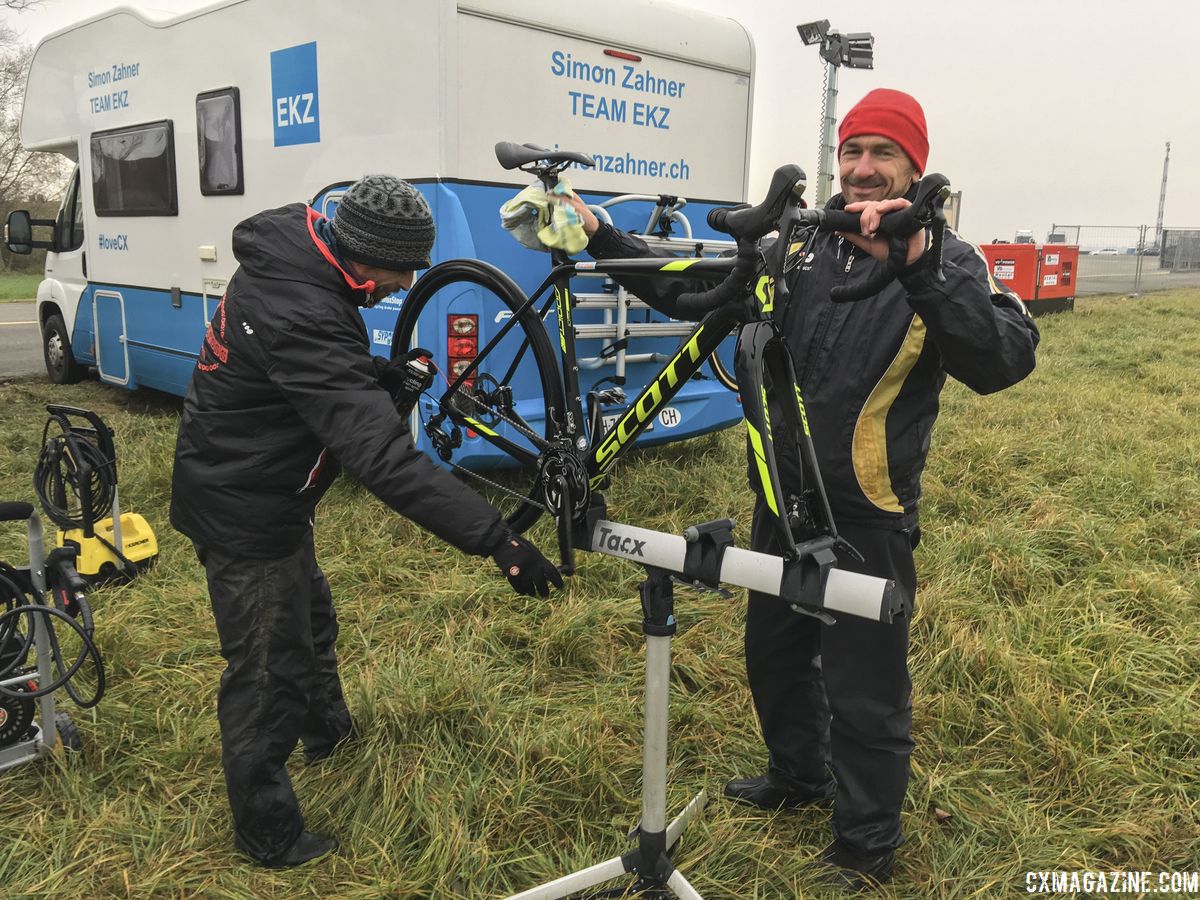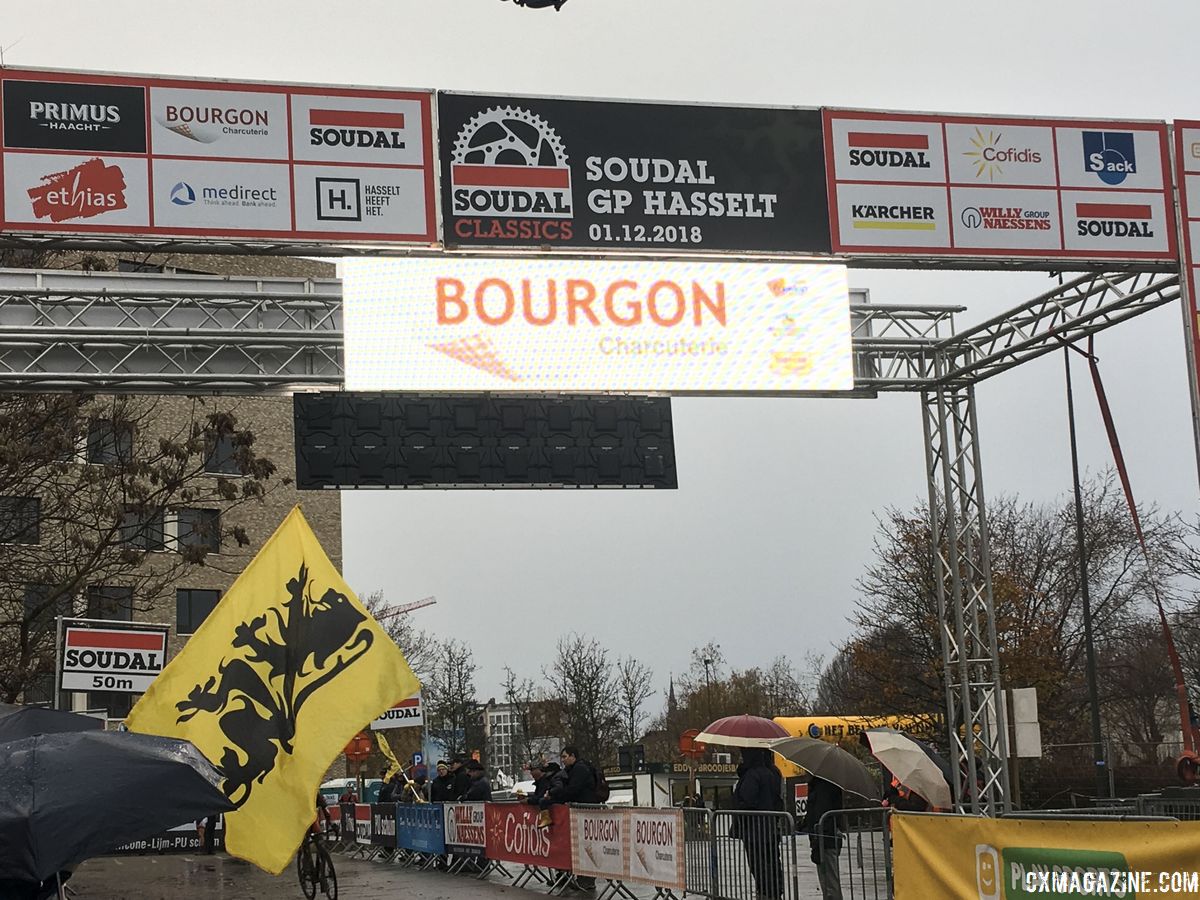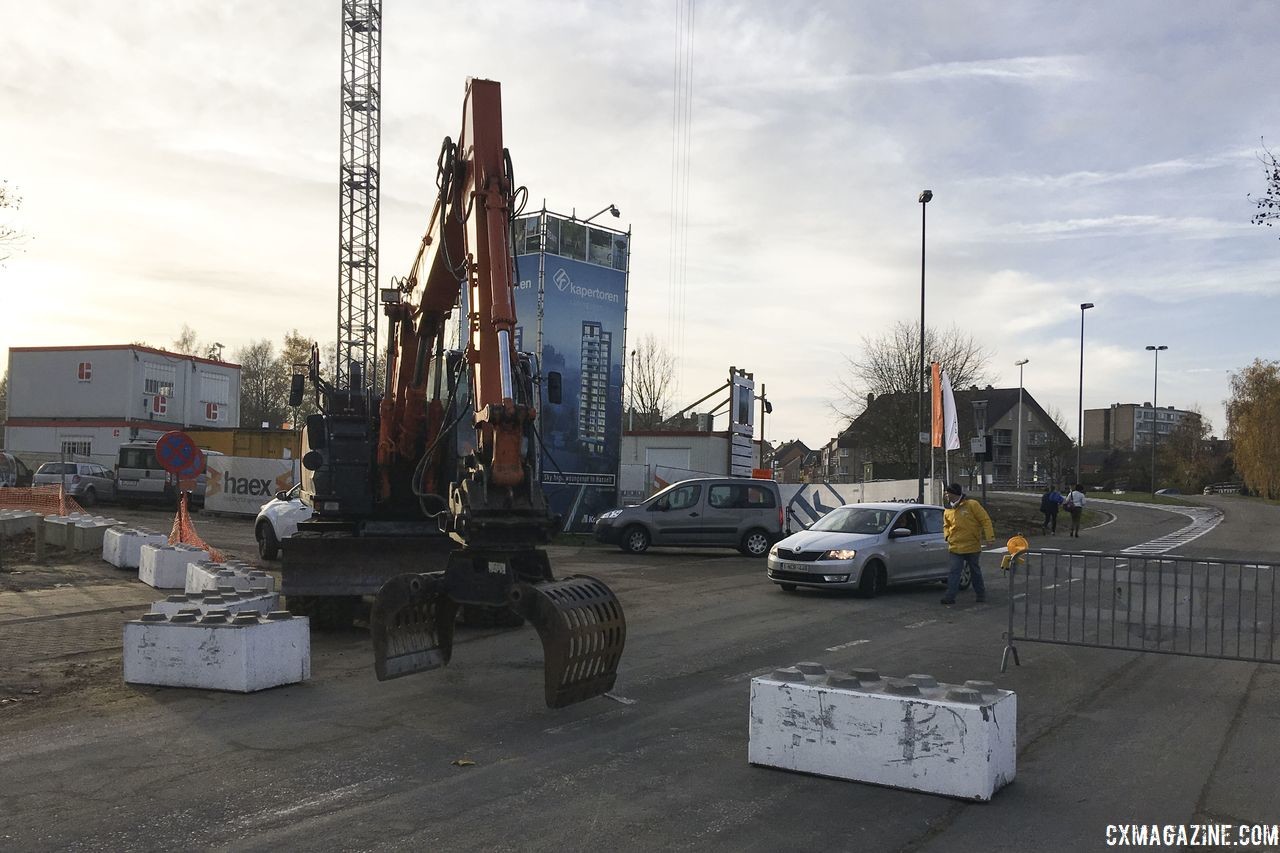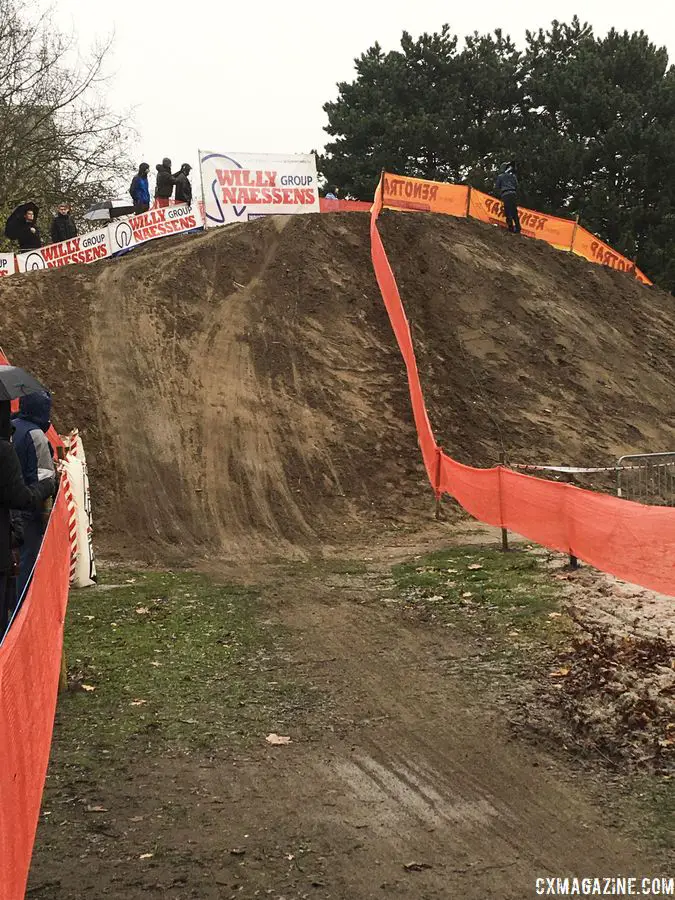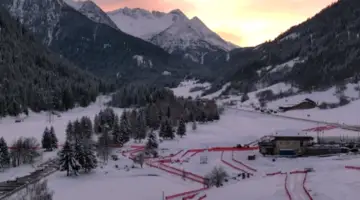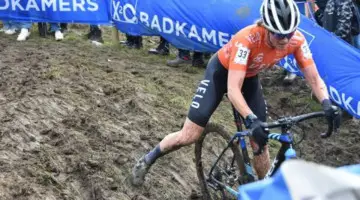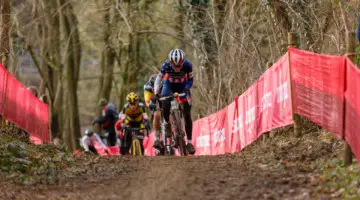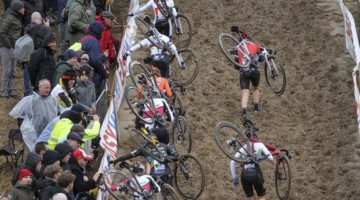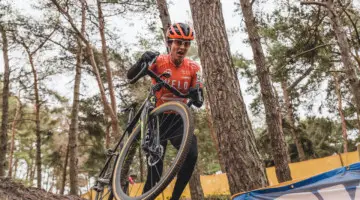I’ve been in Flanders for just over a week. In that time, I have done the World Cup – Koksijde and two UCI races, plus a fair amount of training … in the rain, of course, because Belgium.
I am feeling settled in, despite the whirlwind start to my 2018/19 Belgian campaign.
First up was the famed sands of Koksijde, which as I learned, are different than the sands of Mol. More on that in a bit.
Koksijde World Cup
My arrival in Belgium was a whirlwind. I arrived in Brussels Friday morning, drove to my new “home” in Oudenaarde, assembled bikes, got groceries and packed for the Koksijde weekend. I pre-rode the Koksijde course on Saturday, so my Cyclocross Custom mechanics and I spent the night there.
One of my mechanics has a family home in Koksijde, so we were able to stay for “a box of chocolates”—my mechanic’s words. My mechanics pointed out the efficiency of spending the night rather than making the “long drive” back and forth. This says something about the lack of driving culture here—Koksijde is one hour and fifteen minutes from their homes.
Saturday after pre-ride, we went out to dinner. Between a Flemish menu and my mechanic’s mother speaking little English, it was Flemish immersion for me. For dinner, I had cod and frites.
We made some group translation efforts before ultimately relying on Google Translate to confirm “kabeljauw” is the fish I know as “cod.” For an appetizer, I tried “grijze garnalen,” a tiny shellfish. The mother taught me the steps to extract the meat … in Flemish. Naturally, I mangled the crustation, creating broken shells and stuck-on meat.
It may come as a surprise to you that I typically do not dine on cod, french fries and tiny shellfish most pre-race evenings. Yet this evening captures what it takes to thrive over here: an openness to trying new things, flexibility and a team of supporters (language and cultural interpreters!).
Koksijde, in retrospect, was relatively easy.
World Cups are logistically easy. USA Cycling manages the entries and picks up and distributes numbers and parking passes. There is usually ample parking, a tech guide and website in three languages and plenty of porta-potties (an anomaly in Flanders).
Likewise, being an international event, there are plenty of others who are not at home in Belgium. During pre-ride, Marianne Vos floated over the sand like it was tarmac. Yet there were plenty of others like me: a bit wide-eyed and humbly aware that they better “just run it.”
Around the course, among the racers, English is spoken more often than Dutch. With racers from all around the World, English is the most common shared language.
The race went really well for me. Forty-sixth was my best ever World Cup placing and I finished on the lead lap of a World Cup in a race that can only be described as iconic. In Belgium, I consider sand-riding a huge weakness of mine, so I was surprised to feel rather proficient compared to those around me. In Koksijde, I loved the awesome difficulty of sand racing.
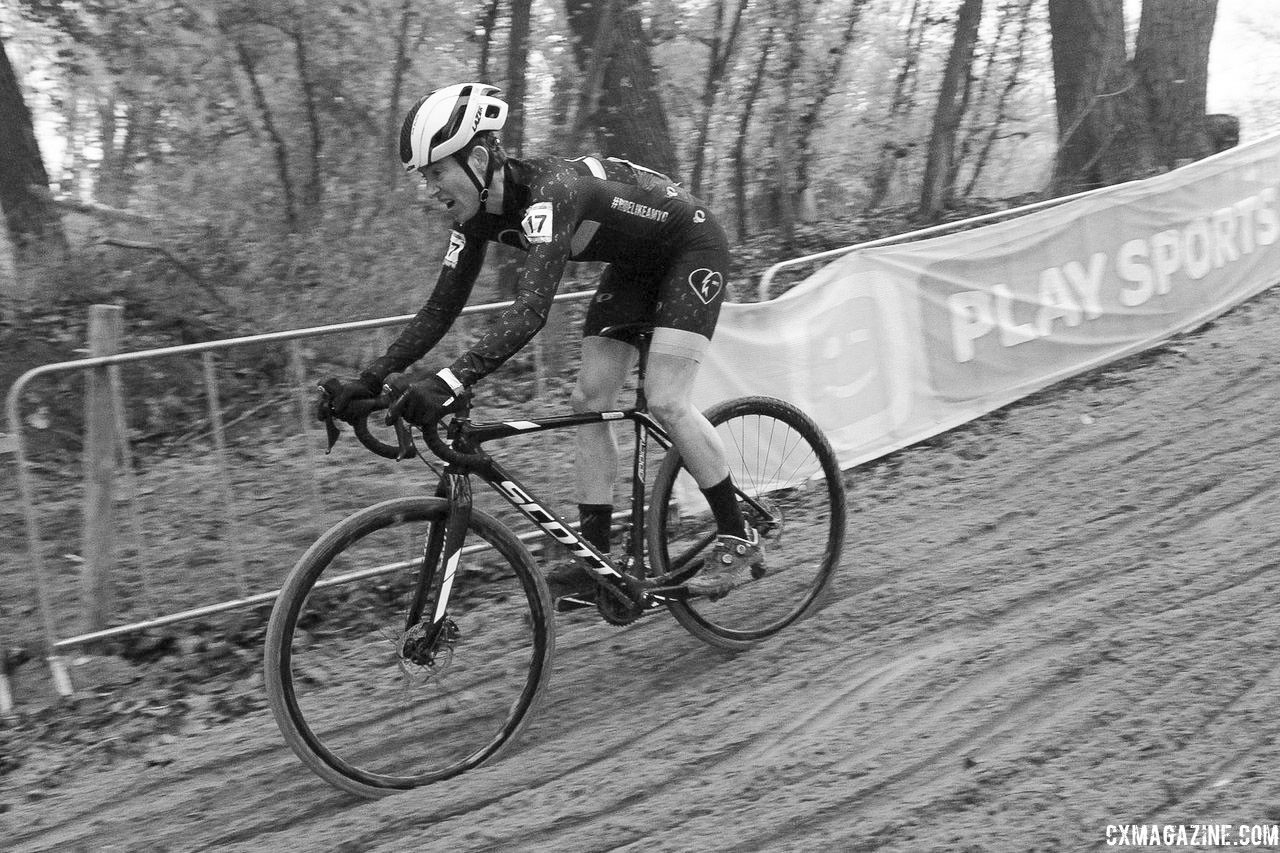
Corey Coogan Cisek stays focused on a descent. 2018 World Cup Koksijde. © B. Hazen / Cyclocross Magazine
Hasselt UCI C2
Hasselt was all about getting acclimated to racing in Belgium again. This wasn’t a World Cup but rather your average UCI race in Belgium with its associated hassles and cultural nuances.
For example, securing a parking space in Hasselt was a slow and comical process.
“Elite” parking by the start finish was closed off and guarded by a gate guard and an excavator. Telenet Fidea, Corendon-Circus, Marlux-Bingoal and the like had pre-assigned, taped-off parking within this section.
Riders with an “Elite” parking pass were permitted entry by the raising of the excavator bucket. The irony was that inschrijven (registration) where one picked up the Elite pass was within the excavator-protected area. Small-time riders like me were turned away until we parked elsewhere and walked to inschrijven and picked up our pass.
I can only assume that the prestigious teams (Telenet Fidea and the like) were provided immediate entry without the pass. However, I watched as Maghalie Rochette with her impressively wrapped CX Fever truck was turned around at the gate. North Americans, even those who start on the front row, are small fish in this pond.
This “parking plan” caused an impressive traffic jam, as large vehicles denied entrance were turned around on a crowded European street.
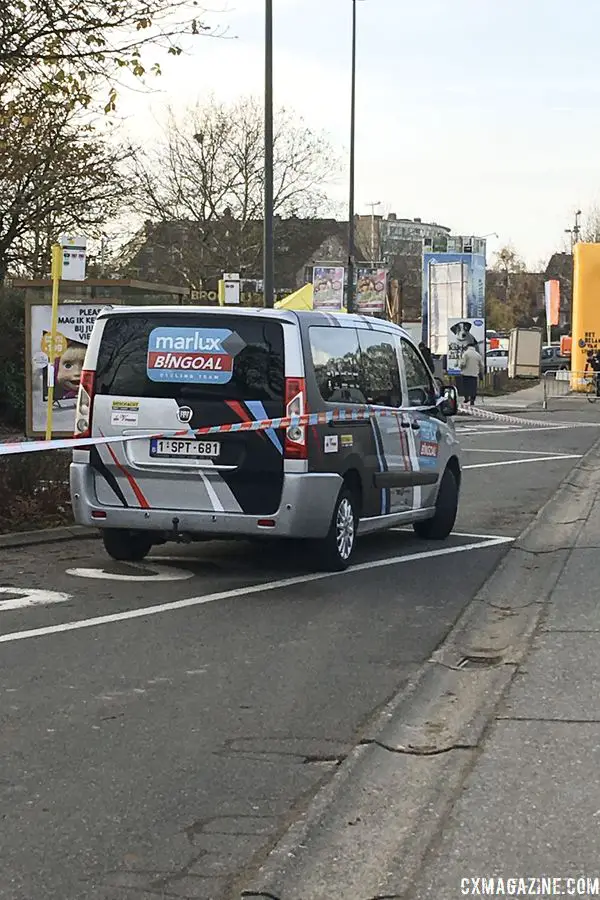
“Elite” parking is reserved for the big Euro teams. Corey Coogan Cisek Rider Diary. © C. Coogan Cisek
The race itself was rather unremarkable. The ground was firm and fast and there were no frightening features. This says something in itself. There is a single hill on the Hasselt, a pile of dirt one runs up and rides down. It terrified me last year. In my memory, it was a three to four story plunging drop. When I arrived, I discovered it had shrunk considerably and was in truth only about a story and a half. It’s amazing what a season of racing in Belgium will do for one’s perspective.
Mol UCI C2
Knowing my running form is excellent, I was excited to race the beach in Mol on Sunday.
Did you know there are at least three types of sand in Belgium?
The sand in Mol differs from the sand in Koksijde and the sand at Zonhoven. As a Minnesotan, I compare the sand of Koksijde to a deep, dry powder.
After rain the night before and during the morning, the sand in Mol was akin to sloppy wet March snow—cement or maybe quicksand. Once it grabbed ahold of your front wheel, your bike was hopelessly sucked in.
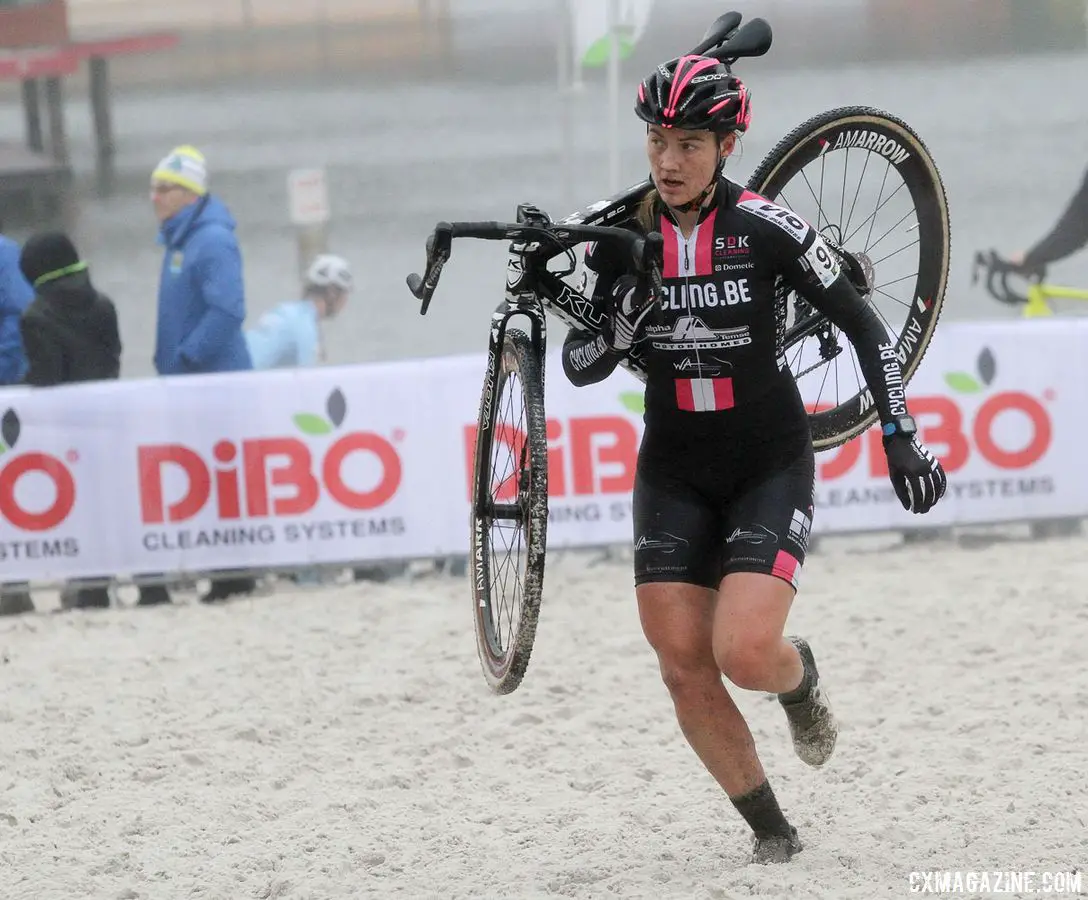
Mol has a different kind of sand than other Euro races. 2017 Zilvermeercross, Mol, Belgium. © B. Hazen / Cyclocross Magazine
In Mol, my power was great on the hard-packed ground. I also ran really well and made up tons of time, but I made a complete fool of myself riding the sand! Four times, I fell on the same uphill, ingloriously flopping over the handlebars when my front wheel dug in.
Unlike Koksijde, I was outmatched by those around me in the sand. I don’t think I was riding less competently than in Koksijde. Rather the difference was in Koksijde my pace had me among Brits, Italians and Swiss, whereas in Mol, I was among the Belgians and Dutch.
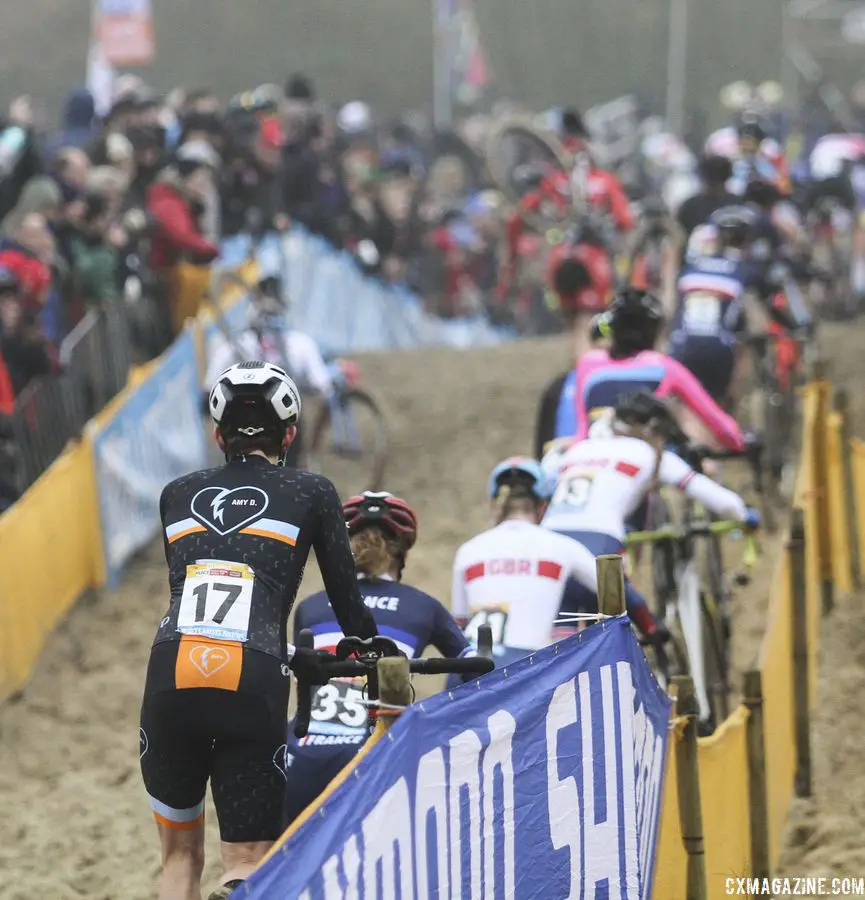
Corey Coogan Cisek hops on the running train. 2018 World Cup Koksijde. © B. Hazen / Cyclocross Magazine
The Belgian and Dutch riders are scrappy, tough racers at home in the sand. Had more of them been permitted to start Koksijde, some would have had impressive results.
Despite the challenges that remain, I am racing better here. I was pulled at both Hasselt and Mol in 2017, but this year I finished firmly on the lead lap. Last year, the organizational oddities of Belgian racing were stressors, but now I register them with an eye-roll.
Everything is easier the second time around.
Corey Coogan Cisek’s rider diary will run every other week through the end of her Belgian season.













